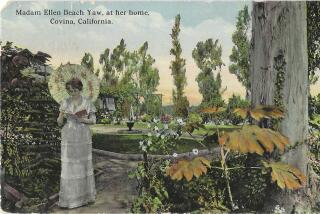Singing Sinatra’s Praises While He’s Still Here to Hear It
- Share via
Not expecting the least disagreement, I recently suggested to a friend that Frank Sinatra is one of the five most significant American cultural icons of the 20th century. My friend disputed that, and the conversation ended with me informing him he was hopelessly out to lunch.
I’m not a long-running Sinatra fan (don’t own a single record), but as his recurring health problems take on an increasingly ominous note, he’s been on my mind as a historical figure whose impact has been immense. Love him or hate him as a human being, Sinatra’s stamp on the American entertainment scene is indisputable. But unlike Elvis Presley, whose premature death stunned people, Sinatra’s advanced years and declining health are leading people to think about his career and his place in history while he’s still alive.
Against that backdrop came an unsolicited tribute from an Orange woman who’s obviously thinking along the same lines. Angela DeCarlo is a professional journalist who grew up in Chicago and, like her husband, Dan, belatedly came to appreciate Sinatra the entertainer. What interested me is that their three sons, now grown, became Sinatra fans before they did.
In her tribute, DeCarlo wrote: “Sinatra’s sick. And we don’t like it. Like adult children faced with parents’ decline, we’re heartsick at the prospect of loss . . .
“Everyone from 70-year-olds to twentysomethings are frantic at his illness. We don’t want him to go. Whether the man who has been petted and praised his entire life can fully understand fans’ feelings is an open question.
“Francis Albert Sinatra is a cultural icon. Like fairy-tale refugees, we pass through life harboring precious emotional gems tucked secretly within the hem of our garments--many sewn there by Sinatra’s sinewy songs of love and loss. He is enshrined in millions of individuals’ heartfelt history. A third-party ghost witness to lovers’ most private moments. Older-generation lovers held hands to his crooning. His voice enveloped teens making tentative love in the proverbial back seat of a Chevy.”
She goes on to describe Sinatra as “the patron saint of humans yearning for love which will last eternally.”
I spoke to DeCarlo last week about her connection to Sinatra. She told me how her in-laws took her three sons to hear Sinatra as far back as 15 years ago or longer--at a time when she and her husband had no interest in him. “I think we were in that time frame where Sinatra was kind of in a slump,” DeCarlo said. “We thought it was so passe to see Sinatra. We paid no attention to him. “
Seven years ago, she and her husband attended their first Sinatra concert. “I realized what people had been talking about,” DeCarlo said. “Truly, my heart stood still at one point, and I felt he was singing to me personally.”
Since then, the DeCarlo family has seen Sinatra numerous times. In addition, his music has adorned their family gatherings. “It’s been something our two generations have been able to enjoy that really connects us with the older generation,” DeCarlo said. “That’s part of what the family fascination has been with him. My husband and I came to him late and we were able to join our children who had appreciated him for a long time, and also link up with the older generation.”
Now, there is the realization that not only has Sinatra performed his last concert but, indeed, he won’t live forever. Such is her love of Sinatra’s music today that DeCarlo wonders what she and her husband were doing all those years.
“He’s the consummate Italian artist,” she said, “in the tradition of the great Renaissance artists. He has the instrument but also the passion you see in the great Italian Renaissance artists. People are great because their talents resonate in other people. That’s the greatness in Sinatra.”
In concluding her written homage, DeCarlo invoked the TV image of Sinatra walking away from the camera as lights dim. “We want to rewrite the television image of him sauntering on a dark stage, hat jauntily cocked, coat over his shoulder,” DeCarlo wrote. “This is where we change the script to interrupt his departure; he turns around to center stage and we are rapt as he flies us to the moon--one more time. Please. One more time.”
Dana Parsons’ column appears Wednesday, Friday and Sunday. Readers may reach Parsons by writing to him at the Times Orange County Edition, 1375 Sunflower Ave., Costa Mesa, CA 92626, or calling (714) 966-7821.
More to Read
The biggest entertainment stories
Get our big stories about Hollywood, film, television, music, arts, culture and more right in your inbox as soon as they publish.
You may occasionally receive promotional content from the Los Angeles Times.










